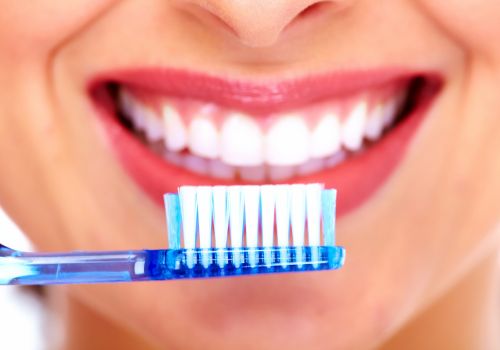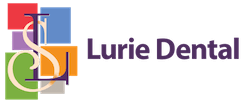A healthy smile is more than just pearly whites; it’s a window to your overall well-being. While consistent brushing and flossing are fundamental, the tool you choose to clean your teeth plays an important role in maintaining your oral health. As dental professionals, we understand the importance of proper dental hygiene, and that’s why we want to help you navigate the world of toothbrushes and choose the perfect one for a sparkling smile.
Bristle Types: The Softness Factor
Toothbrushes come in various bristle types—soft, medium, and hard. But when it comes to safeguarding your teeth and gums, dental experts consistently recommend soft bristles. Here’s why.
Soft bristles effectively remove plaque and food particles while being gentle on your enamel and gums. In contrast, medium and hard bristles may seem like they provide a deeper clean, but they can actually wear down enamel and irritate gum tissue, potentially leading to gum recession and tooth sensitivity.
The key to a thorough clean isn’t harder bristles—it’s proper brushing technique. Opt for soft bristles to keep your smile healthy and protected for years to come.
Head Size and Shape: Reaching Every Nook and Cranny
The size and shape of your toothbrush head directly affect how effectively you can clean your teeth.
Here’s what you need to consider in terms of your toothbrush head’s size and shape:
- Size: The toothbrush head should comfortably fit inside your mouth, allowing you to reach all tooth surfaces, including the back molars. A smaller head typically offers better maneuverability, especially for individuals with smaller mouths.
- Shape: Some brushes have angled heads to help reach areas behind the front teeth, while others have multi-level bristles. These features can further enhance plaque removal but are not necessarily essential for everyone.
Ultimately, choose a head size and shape that feels comfortable and allows you to easily reach all areas of your mouth for a thorough clean.
Manual vs. Electric: Power Up Your Brushing Routine
.jpg)
Deciding between a manual or electric toothbrush is a matter of personal preference. Both can be effective if used correctly. Manual toothbrushes require proper brushing technique and consistent effort for two minutes twice a day.
Electric toothbrushes offer advantages that make them appealing to many people.
The advantages of electric toothbrushes include:
- Timers to make sure you brush for the recommended two minutes.
- Oscillating or rotating heads that may enhance plaque removal compared to manual brushing.
- Motivation for individuals with limited dexterity or those who may find manual brushing challenging.
The key is to choose a toothbrush that you’ll use consistently and comfortably. Whether you prefer manual or electric, the most important thing is following proper brushing techniques.
Handle Design: It’s All About Grip
A comfortable and secure grip is important for effective brushing. Look for a toothbrush with an ergonomic handle that fits comfortably in your hand and allows for controlled movement. Non-slip grips can be especially helpful for individuals with wet hands or dexterity limitations.
Some brushes even have flexible necks, which can reduce pressure on the gums and provide a gentler brushing experience.
Beyond the Basics: Additional Features to Consider
While the core functionalities of a toothbrush are crucial, some have additional features that can enhance your oral hygiene routine.
Additional features to consider when shopping for a toothbrush are:
- Tongue cleaners: Built-in tongue cleaners can help remove bacteria and freshen breath.
- Specialty brushes: Orthodontic brushes with specialized bristles are designed to clean around braces, while interdental brushes help clean between teeth, reaching areas that regular bristles may miss.
- Sustainability: Eco-conscious consumers can opt for bamboo brushes or electric toothbrushes with replaceable heads to minimize environmental impact.
When to Replace Your Toothbrush
Even the best toothbrush needs to be replaced regularly to maintain its effectiveness. As a general recommendation, it’s best to replace your toothbrush every three to four months. Damaged or discolored bristles also indicate that it’s time for a replacement. Lastly, after recovering from a cold, flu, or any other illness, it’s important to replace your toothbrush to prevent the spread of bacteria.
By replacing your toothbrush regularly, you ensure optimal cleaning power and protect yourself from potential bacterial re-exposure.
Conclusion

Selecting the right toothbrush is a simple yet essential step toward maintaining excellent oral health. Opt for soft bristles, a well-suited head size and shape, and a steady brushing routine for the best results. Comfort and effective cleaning should be your priorities. You may also benefit from features like ergonomic handles, tongue cleaners, or specialty brushes tailored to your needs. And don’t forget—replace your toothbrush every few months or as soon as the bristles show signs of wear to ensure optimal performance.
However, even the best toothbrush can’t replace professional dental care. Regular checkups and cleanings allow your dentist to monitor your oral health, catch potential issues early, and offer personalized advice for a bright, healthy smile.
By choosing the right toothbrush and staying on top of your dental visits, you’re making a small but powerful investment in your smile and overall well-being—one that will pay off for years to come.

